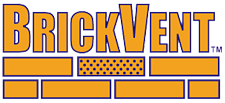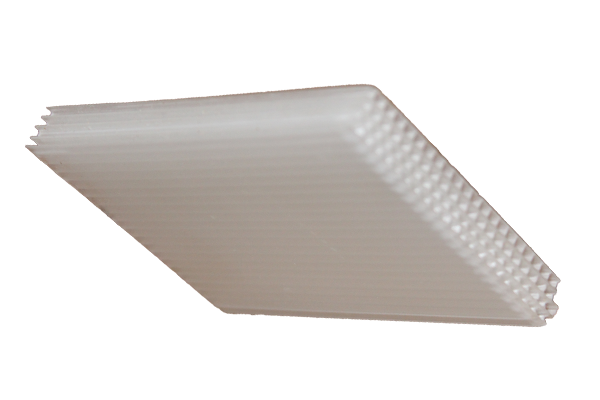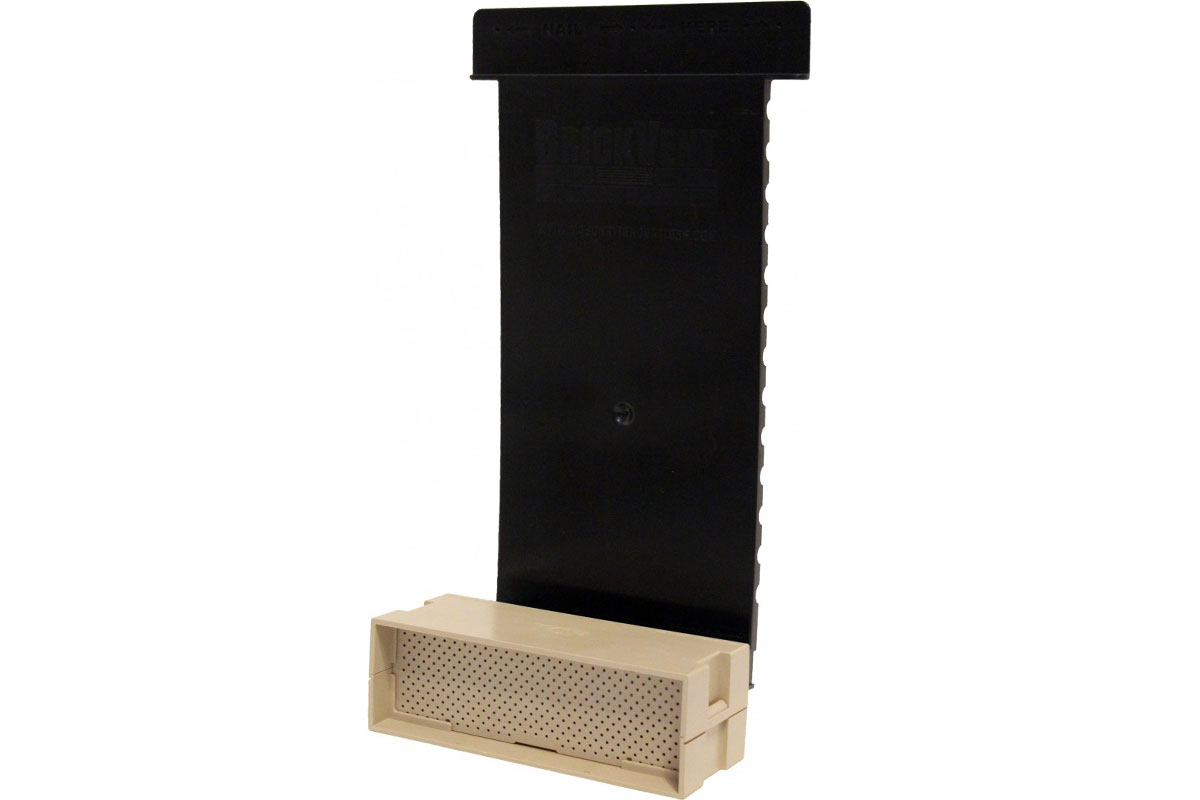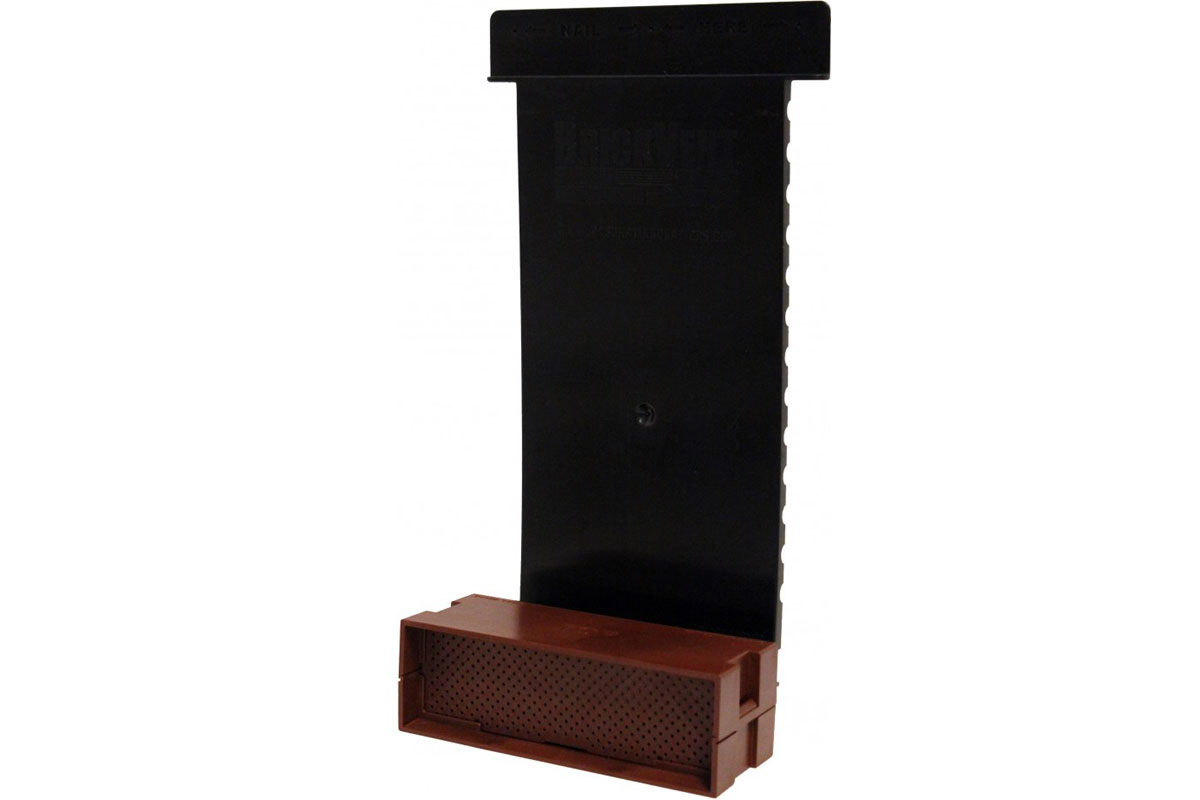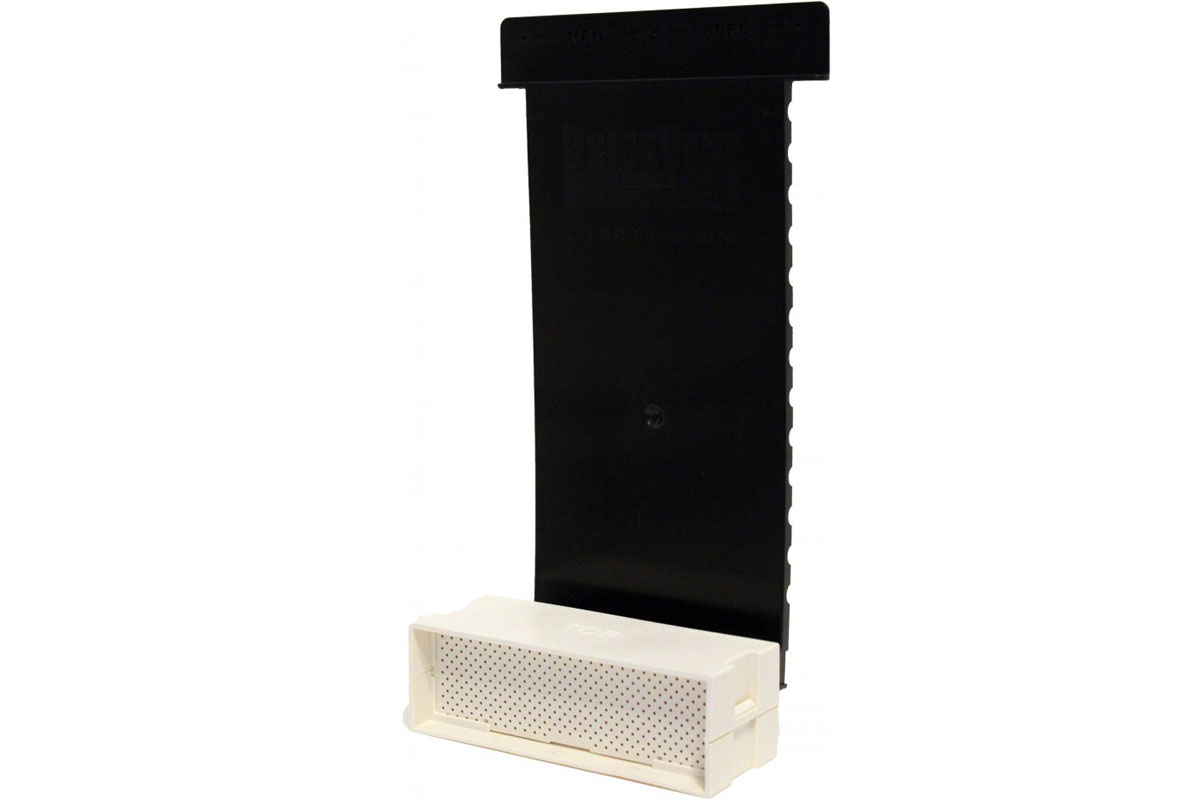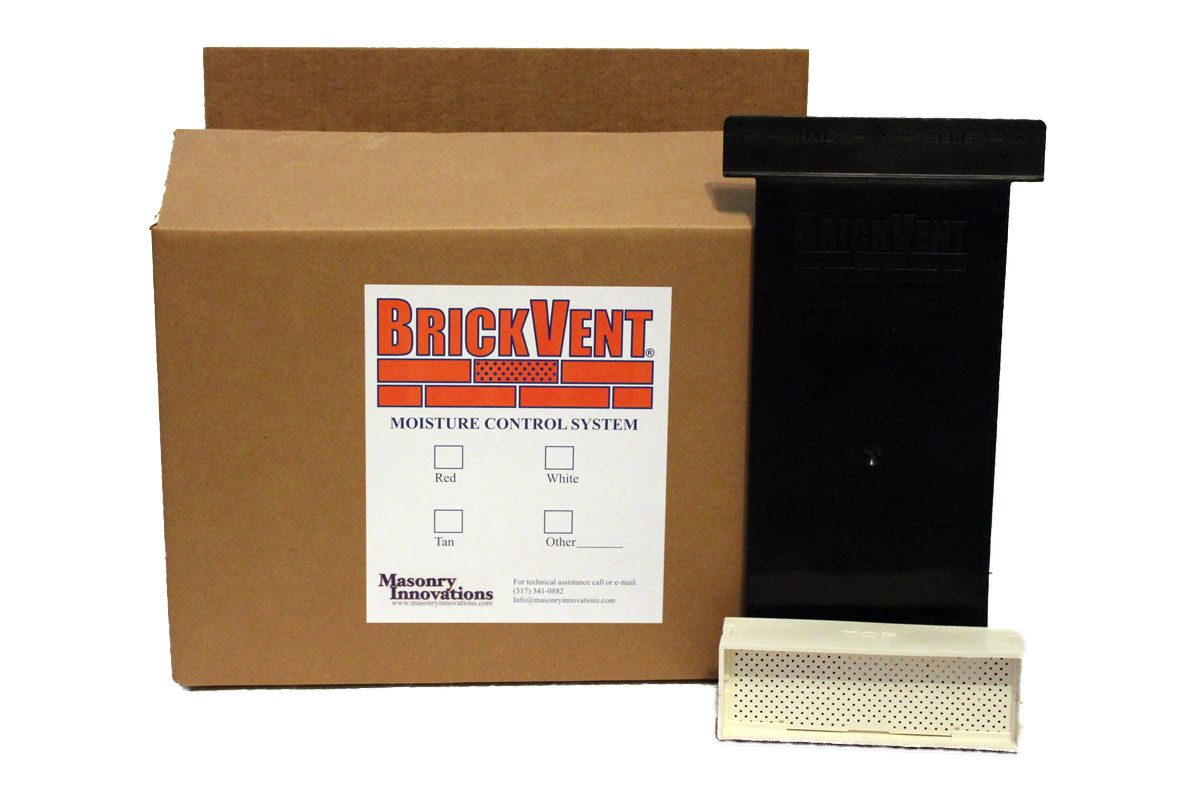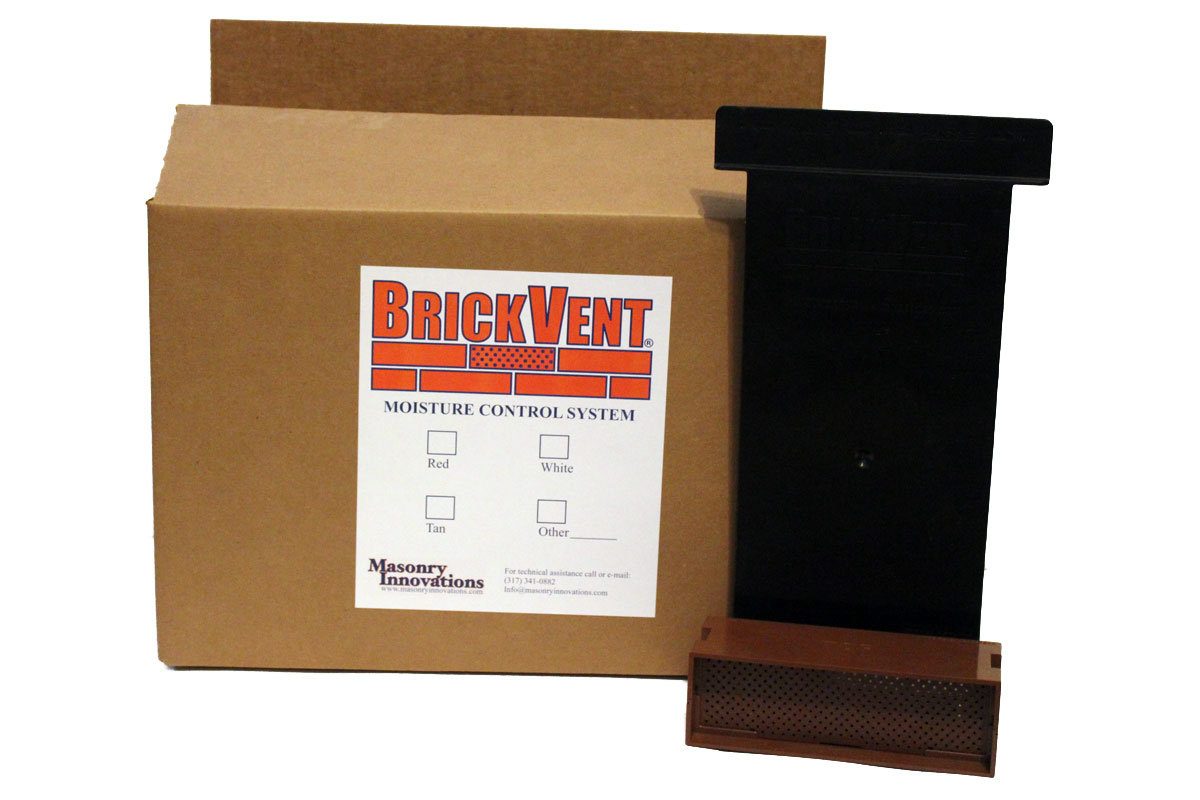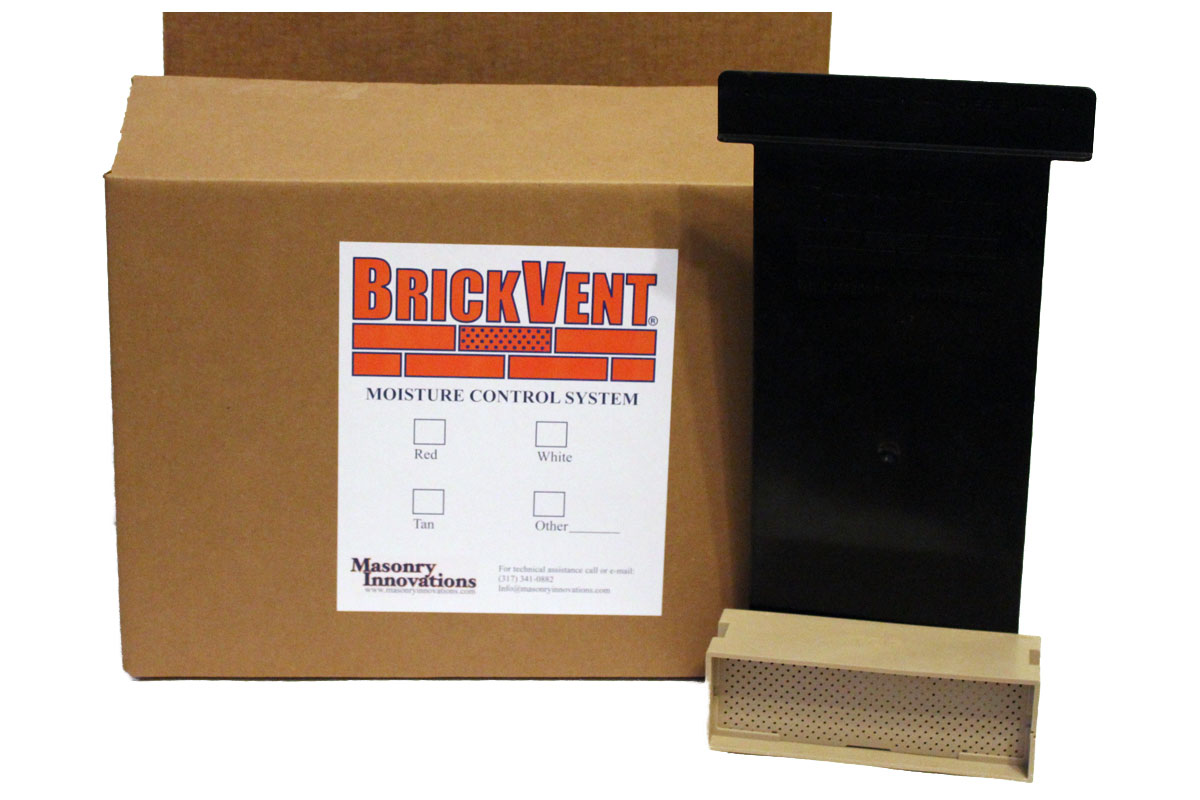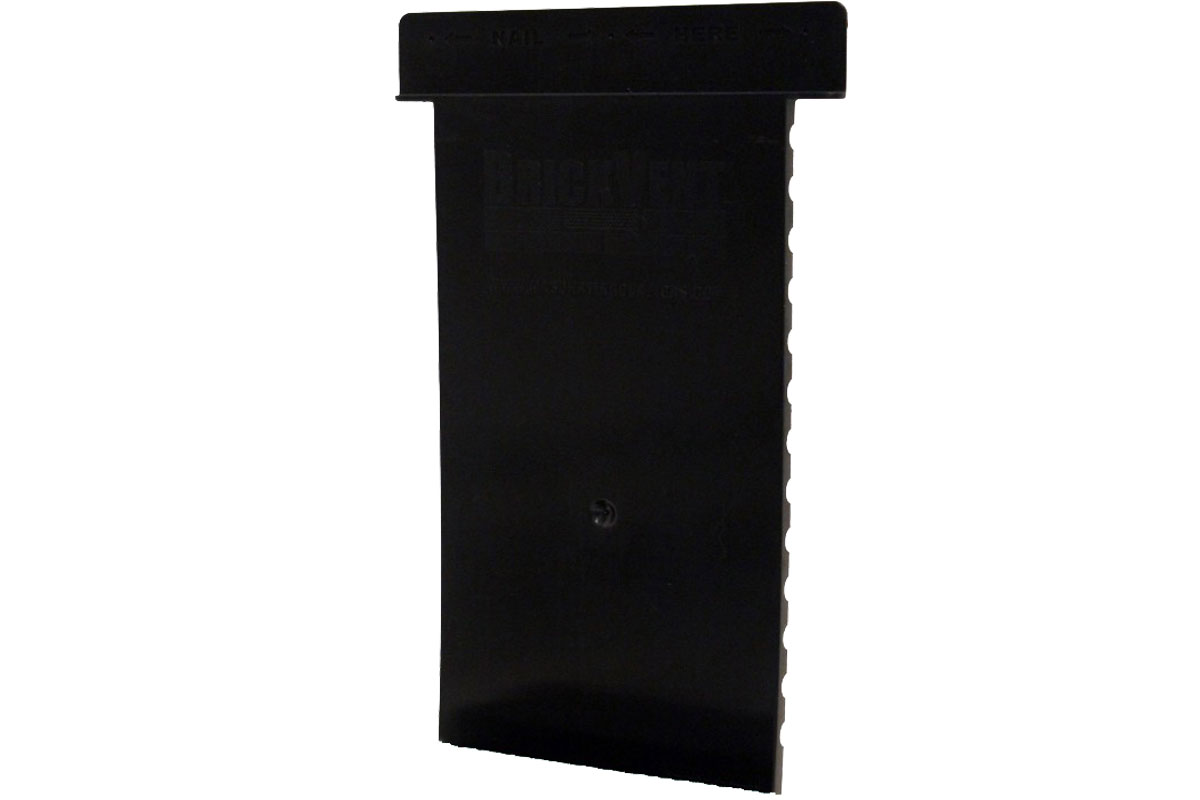The importance of drainage and ventilation is widely acknowledged throughout the Masonry industry. The typical brick or stone wall (masonry veneer) on a building is made of very porous materials which take on a tremendous amount of water during rain events. For years, local building codes have attempted to address the problem by mandating weep holes. There are some serious drawbacks with weep holes however. Because they are basically open doors to the cavity behind the masonry veneer, weep holes give insects or mice open access to the space or cavity behind the wall. (For more on weep holes)
Most builders understand this serious issue and first seek to create an open unobstructed cavity behind the brick veneer. A cavity aids in drainage and creates an opportunity for air to flow through. This would help keep the the brick veneer wall dry. But weep hole inserts can easily become clogged by mortar during construction and their small size limits how much air can enter the cavity wall. Now, BrickVent accomplishes and goes beyond the intent of building codes by providing ample drainage AND a much larger conduit for the flow of air to help keep the brick structure dry.
BrickVent works by laying a series of plastic brick vents in place of the bricks along the bottom of the brick wall. The plastic vents are embedded with UV inhibitors to keep them from breaking down or fading. The brick vents are connected to a plastic mortar deflector that keeps the units from becoming clogged by falling mortar as the wall is built. After the brick wall is complete, there is an unobstructed path for water to escape and ventilating air to enter the cavity behind the wall. At clean-up, the mason will remove the protective cardboard insert and the brick vents blend seamlessly with the rest of the wall!
